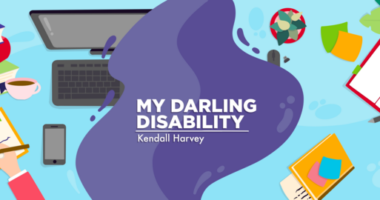Keeping Hope Alive With New Treatment Research

Research into my rare disorder, Friedreich’s ataxia (FA), seems to me to be on the rise. Though no specific treatments for FA exist, a wide range of ongoing studies is exploring different ways of treating this debilitating disease. It seems that scientists increasingly are taking an interest in FA.
Before I become too optimistic, though, I remind myself that I’ve been to this rodeo before. When the defective gene that causes FA was discovered, members of the FA community suspected that a treatment or cure could be coming. However, decades later, no treatment or cure exists. And FA, the grim locomotive, barrels forward, causing nonstop physical progression and far too many deaths.
Sometimes it’s hard to be hopeful while living with FA. Like a drowning man desperate for air, sometimes I seek reassurance that scientific advances toward a treatment are indeed real.
I am lucky to have become friends with Lauren Wilkinson, associate director of patient engagement at AavantiBio, a company that provides gene therapy treatments for FA. I often ask her about any new signs of promise regarding FA. She not only reassures me, but also encourages me, lifts my spirits, and makes me laugh.
I recently spoke with Lauren about her work. Excerpts follow.
ML: Tell me about your background. How did you end up in your role at AavantiBio?
LW: My background is in community health. Before joining AavantiBio last year, I worked for nine years at a national nonprofit focused on treatment and cures for neuromuscular disease. My role there was in care and clinical services, which encompassed management of the local clinical network, patient/caregiver/community education, patient services and resources, the Muscular Dystrophy Association Summer Camp, and much more. This is where I started working with Drs. [Barry] Byrne and [Manuela] Corti [prominent researchers of FA] through the pediatric neuromuscular clinic at the University of Florida (UF) health division. I’ve seen their brilliant minds at work firsthand, and when the opportunity arose for me to work with them in a different capacity, it was a very easy yes.
Describe AavantiBio for anyone who is unfamiliar with it.
AavantiBio was founded by Drs. Byrne and Corti in 2017, based on a pilot research program initiated at UF with funding provided by a grassroots fundraiser set up by a mother whose son has FA. Currently, we are a preclinical stage biotech company working on a gene transfer therapy for rare diseases, with our lead program being FA. We’re focusing on targeting both central nervous system and cardiac deficits that manifest in FA.
What experience do you have with the FA community?
The previous organization I worked for supported FA as a diagnosis under their umbrella. I was lucky enough to get to know a handful of FA families during my time there and have the opportunity to work with some of the leading FA experts in Florida. So it was a smooth transition to my role at AavantiBio. I’ve been able to immerse myself into the community and have really enjoyed getting to know families and hear their stories. Not to mention, I’ve made some great friends and met some of the coolest people I know.
Thanks for the brownie points. Was there anything that surprised you in your new role at AavantiBio?
There is an intricate web of science/regulatory that I had only ever had surface-scratching knowledge of, and at the bottom of it all is a drive and sense of urgency to deliver a safe and effective treatment, or better yet, a cure. I love being part of this brilliant and experienced team that feels that sense of urgency in everything they do.
Do you have a message for those of us living with FA?
Please keep hope. I know that this has been a long journey for many people in the FA community. I can speak for the entire AavantiBio team when I say that we see you, we hear you, and we come to work every day for you. Please continue to share, reach out, and let us get to know you. It drives the work we do.
***
This column, “Little Victories,” can be summed up as my ongoing fight with hope, the double-edged sword that both encourages and disappoints me, depending on the day.
For me, I will always choose to end with hope, even though it isn’t always divine, and it may even be naive.
Hope is choosing to look ahead to great days, and hope is always worth keeping.
Lauren taught me that.
If you are in the FA community and want to make a new friend, email [email protected]. Tell her Matt sent you.
***
Friedreich’s Ataxia News is strictly a news and information website about the disease. It does not provide medical advice, diagnosis or treatment. This content is not intended to be a substitute for professional medical advice, diagnosis, or treatment. Always seek the advice of your physician or another qualified health provider with any questions you may have regarding a medical condition. Never disregard professional medical advice or delay in seeking it because of something you have read on this website.The opinions expressed in this column are not those of Friedreich’s Ataxia News or its parent company, Bionews, and are intended to spark discussion about issues pertaining to Friedreich’s ataxia.







Anette Moberg
Thanks for this hopeful information❤️